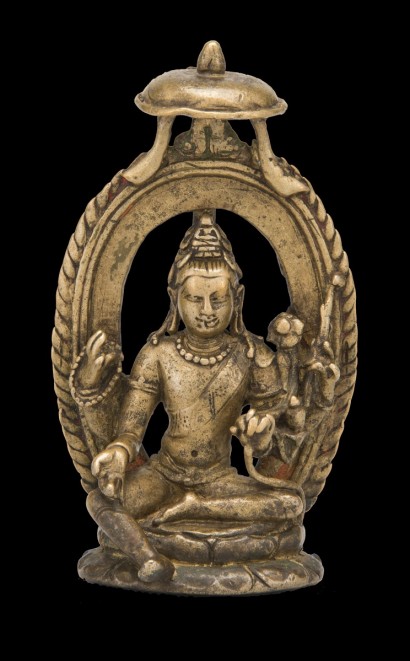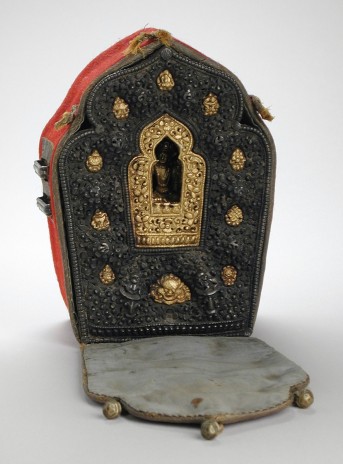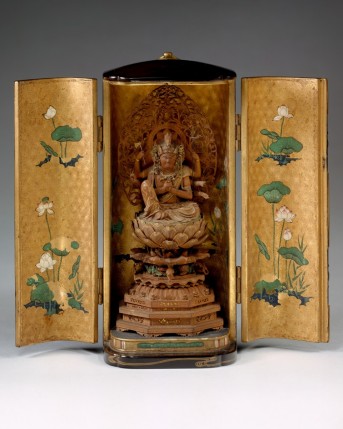India, Pala period, 9th century; copper alloy; 4 1/2 x 3 x 2 1/8 in.; long-term loan from the Nyingjei Lam Collection to The Rubin Museum of Art, New York, L2005.9.4.
The worn condition of this devotional object indicates it was no doubt frequently lustrated with milk or water as an act of veneration. Its small size suggests that it may have traveled with its owner, and indeed, the shrine in which Avalokiteshvara sits creates its own sacred space for worship. Each of the deity’s four hands conveys his qualities: mala, or prayer beads, the gift-giving gesture, the lotus, and an ascetic’s “three-pronged stick” or tridanda. Both the tridanda and the mala are also closely associated with Brahmanical gods, and their depiction here points to the early connections between Buddhism and Brahmanism in India. EJ






